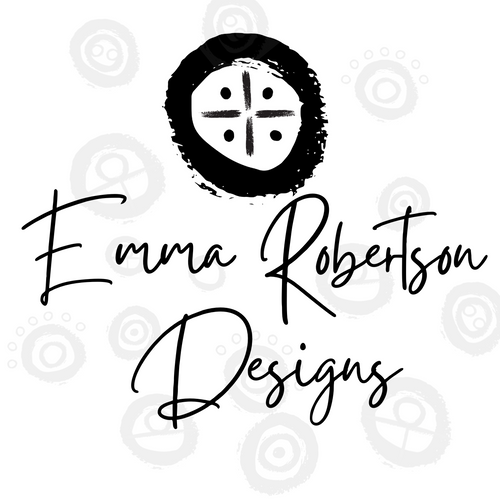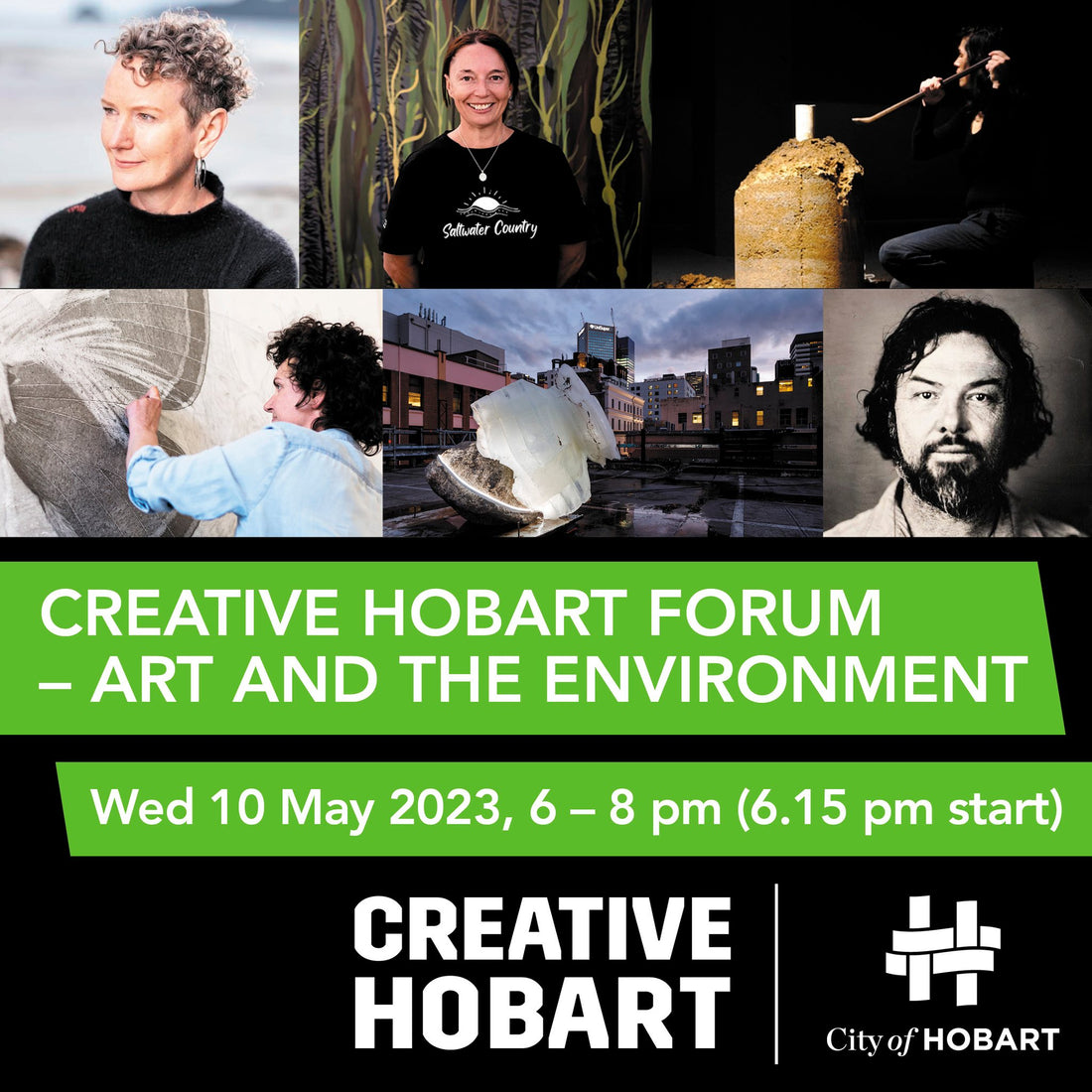It was my pleasure last week to speak alongside Selena de Carvalho, Lucienne Rickard, Lucy Bleach, Dan Broun, Jane Rawson, and Robin Banks about their respective arts practices and the role environment plays. It was incredible to listen to the very talented artists describe how their work is influenced by and connected to the environment around them.
Not only did the artists demonstrate their remarkable skill, but they also provided insight into how nature has shaped their art. The event was a sellout and was very well received by the audience. During the conversation, I spoke about my Salt Water Country installation as well as my kelp and natural resource work more broadly.
Below you will find my presentation:
Ya pulingina I am Emma Robertson, and my images will simply scroll through, and I won't be addressing them specifically, but rather the topics more generally. My practice, my motivation, and the impact of my practice on my community are the three topics I will discuss tonight. The northeast, Flinders Island, and the southeast are culturally significant to me as I am a proud tralwoolwaywoman. In terms of arts practice, I am largely self-taught or have been taught through the passing on of cultural knowledge or traditions by our Elders.
Cultural knowledge practices are handed down, yet we are encouraged to go and explore and practice theseon country for ourselves. As we learn about the environment, we are given guidance, but then we are supported to facilitate our own environmental learning. Finding our own shell beds, learning which grasses grow through the seasons, and the best beaches for sourcing kelp. We explore how natural materials can be processed to make fibres and gather environmentally friendly and sustainable materials for art.
As an emerging shell stringer, weaver, artist, and cultural practitioner, I push the invisible boundaries around cultural artworks and use traditional methods and resources in contemporary ways to provoke thought, feelings, and immersive experiences. By making Aboriginal art a focus in mainstream settings, I hope to increase the visibility of our culture and people. Furthermore, I want to dispel this recurrent stereotype that Aboriginal art is only characterised by dot paintings. These paintings are beautiful, but they are not representative of Tasmanian Aboriginal art.
Kelp medium is one of my absolute favourites to work with, and I have created everything from water carriers to wearable jewellery, to a completely immersive experience of the sea without getting wet. Creating Saltwater country was achieved by repurposing a shipping container. Giving life again to something that had outlived its purpose. In its walls, creativity is alive again, as it has since been transformed into an art and music studio.
Once inside the container, you were transported to the sea, with ocean sounds and water trickling, your senses were lit up with the smell of kelp, salt air and the seaside, and you could touch and walk around the dried kelp tendrils that clung to the roof, whilst lights flickered through the kelp like sunlight flickering through the ocean ceiling.
It has always been my nature to be creative, ever since I was a child. I would draw if I had pencils. I would sculpt if I had clay. My passion for creativity has only grown stronger throughout my life, driving me to pursue a career that allows me to express my ideas, thoughts, and beliefs through my art. I have always felt that my hands need to be busy creating something, whether it is crocheting, weaving, painting, drawing, or creating something else. The empowerment of my people and encouraging everyone's creativity are two things I strive to embody.
My creative endeavours have become an integral part of my life, inspiring me to do what I love. By creating art, I not only express myself, but I also hope to empower and motivate others to be creative in their own unique ways. It seems to me that I was born with a compulsion to create. When I haven't been especially creative, I've renovated homes - which anyone who has done this knows is an immense amount of vision it takes to build something from scratch with your own two hands. Because of this, I absolutely loved bringing my first public art project to life - Saltwater Country. In collaboration with Constance Ari, the Tasmanian Aboriginal Centre, this idea was born and brought to life.
Having been born and raised in an aboriginal community, I have a strong and deep connection to country. Through this project, I felt like I was able to honour that connection and pay tribute to my heritage - as Saltwater people. Whenever I feel out of sorts, I turn to country, whenever I need inspiration, whenever I feel overwhelmed by life, I turn to country. Country gives us the tools to process whatever we may be experiencing in our life and I wanted to try and capture that feeling in this work.
With the introduction of non-native plants and animals, the clearing of lands for grazing, and the lack of knowledge on how to care for the lands and waterways, colonisation has impacted my people and our country as well. To capture this emotion of resilience, I hope to use my work to explore the changing relationship between my people, our country, and colonisation.
In addition, global warming has enormous impacts on country. The sea temperatures are rising, and this has devastating consequences for my culture. It was important for me to highlight these issues in this piece of work so that we can talk about the importance of our cultural resources as well as the fact that we all need to work together to take care of the environment in order to keep the oldest living culture alive for my children and grandchildren to come.
Despite my lack of ability to measure sea levels or explain what nutrients are washing down the east Australian current and killing our kelp beds, I can raise awareness through my artwork. By creating, I can make you think about what you can do to keep a country healthy, I can highlight the dire situation my culture is facing, and I can do this through my artistic endeavours. Through my art, I can provide insight into the issues, draw attention to the plight of my people, and encourage others to take action to protect the environment. People will become more aware of the environment and science through arts education and will be able to find solutions through citizen science activities. This proves yet again how interconnected we all are.
Through my practice, I hope to introduce ideas and themes that will encourage participants to become more environmentally conscious. Studies have shown that viewing natural environments stimulates curiosity and fosters flexibility and imagination. Taking this into consideration, my saltwater country installation was often praised by viewers for how it transported them to childhood summers by the sea, and the smell of kelp unlocked these memories for them.
It was amazing how listening to the ocean sounds from inside the shipping container made them completely oblivious to the fact that they were standing on a concrete structure in middle Elizabeth Pier. Through their connection to the installation, they were transported to another world. The more people can experience art, and not just view it, the broader the conversation about sustainability, global warming, and conservation will become.
To protect nature by encouraging communication and participation among the community. Our First Nations friends and family provide us with unique perspectives on the world around us, and what better way to gain a deeper understanding than through the lens of their culture. In the past and in the present, we have cared for the environment, practiced sustainable practices, and participated in ecological activism.
I believe that the community is ready to engage in art in ways they have never done before, including learning, listening, and participating. In addition to being excited about where art may end up, I'm also excited about how we can work together as a community and a people to heal our planet. To that end, I'm committed to finding ways to use art to foster collaboration and dialogue, and to support sustainability, both in our communities and globally.

